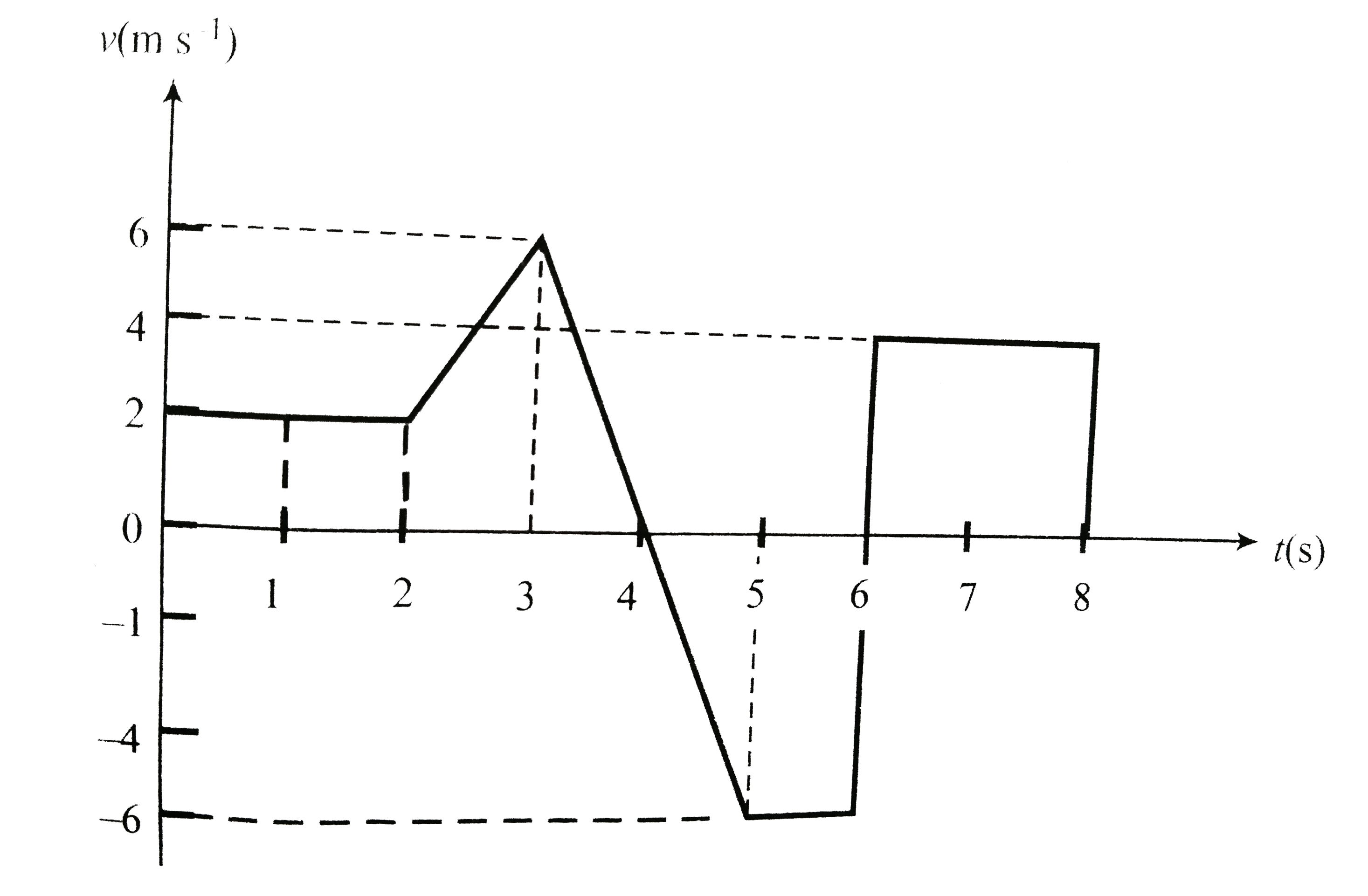A force-time graph for the motion of a body is shown in fig. change in linear momentum between 0 and 8 s is:-

Zero
4N-s
8Ns
None
The correct Answer is:A
Δp=∫Fdt=0 (area of F-t graph is zero)
Topper's Solved these Questions
- NEWTONS LAWS OF MOTIONBOOK - ALLENCHAPTER - NEWTONS LAWS OF MOTIONEXERCISE - EXERCISE-III
28 Videos
- NEWTONS LAWS OF MOTIONBOOK - ALLENCHAPTER - NEWTONS LAWS OF MOTIONEXERCISE - EXERCISE-I
52 Videos
- NEWTON'S LAWS OF MOTION & FRICTIONBOOK - ALLENCHAPTER - NEWTON'S LAWS OF MOTION & FRICTIONEXERCISE - EXERCISE (JA)
4 Videos
- RACEBOOK - ALLENCHAPTER - RACEEXERCISE - Basic Maths (Wave Motion & Dopplers Effect) (Stationary waves & doppler effect, beats)
24 Videos
Similar Questions
A force-time graph for the motion of a body is shown in fig. Change in linear momentum between 0 and 8s is :

View SolutionA force-time graph for the motion of a body is shown in figure. Change in linear momentum between 0 and 8 s is:

View SolutionA force lime graph for the motion of a body is as shown in figure. Change in linear momentum between 0 and 6s is:

View SolutionForce-time graph of a particle of mass 6 kg is shown in figure, then change in linear momentum during t = 0 to t = 10 s is
View SolutionVelocity-time graph for the motion of a certain body is shown in Fig. Explain the nature of this motion. Find the initial velocity and acceleration and write the equation for the variation of displacement with time. What happens to the moving body at point B? How does the body move after this moment ?
View SolutionThe velocity time graph of a body is shown in fig. it indicates that :

View Solutions-t graph of a particle in motion is shown in Fig. Calculate

Displacement
View SolutionFig. 2.41 (a) shows the velocity-time graph for the motion of a body. Use it to find the displacement of the body at t = 1 s, 2 s, 3 s and 4 s, then draw the displacement-time graph for it on Fig. 2.41 (b).

View SolutionThe velocity-time graph of a body is shown in .
The displacement of the body in 8s is.
 .
.
View SolutionThe velocity-time graph of a linear motion is shown in figure. The displacement from the origin after 8 sec is :

View Solution
